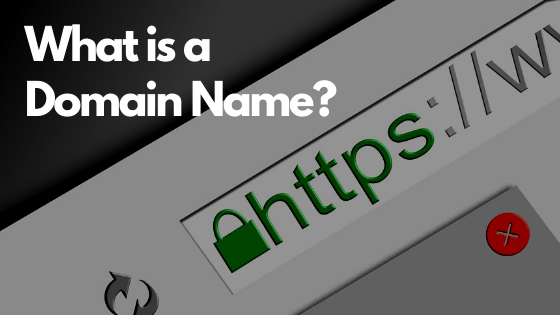These days, having a website is a requirement, not a possibility. For any website to be successful, you need a domain name. However, what are domain names and how do they exactly work? In this blog, we will explain what a domain name is and how they impact.
A domain name is, simply, an address that people type in to visit a website. More specifically, each domain has a specific IP address, that belongs to a server and that server is where that domain name is hosted.


IP addresses are hard to remember, as you can see, so we have domain names which lead us to the websites we want to visit.
Domain Name Structure
A domain name consists of 2 parts. For example, the greenstripemedia and the .co.uk, known as TLD’s or top level domain names. There are hundreds of these including There are numerous TLDs such as .com, .org, .net, .gov, and even .pizza.
ICANN, short for Internet Corporation for Assigned Names and Numbers are responsible for creating new and maintaining current top-level domains. ICANN also has contracts with various domain name registrars such as 123-reg.com and namecheap.com, where you can buy your domain name.
How Domains Work
We use domain names, as we have already spoke about, so that we don’t have to remember IP addresses. However, Yet, you need a server where they are connected. Like a map that directs you to the right location. For domain names and IP addresses, this map is known as the Domain Name System or DNS.
When someone types in your domain name, the browser sends a request to the DNS. The DNS will then look up the IP address partnered with the domain name and pass it on to the computer that actually has the files that make up your website.

This will collect the contents of your website and send that data back to the browser which will then display your website to the person that wanted to visit your site.
Terms Associated with Domains
We have already explained IP addresses and DNS records. Let’s go over a few more that come up relating to domain names.
- Nameservers — If DNS records are like a map, nameservers are the paper that it is printed on. They are the physical servers that contain the records pointing browsers to the right IP addresses.
- A Records — The A record connects your domain name to IP addresses. So, they are more direct, as they don’t map two names to each other. If they did map two names together, this would mean they different IP addresses.
- TXT Records — Text records allow you to enter text into the DNS. Some common uses include verifying domain ownership or ensuring email security.
- Domain Registrar — A registrar that sells domain names. The person who registers a domain name is called a Domain Registrant.
How to Choose a Domain Name for Your Website
Choosing your domain name is massively important. This is the way that people reach your website. Here are a few tips to help you come up with a good one:
- Make sure your domain name is easy to spell and remember.
- If you’re building a personal website, consider using your own name as the domain like www.samcherry.co.uk or www.markcherry.co.uk.
- If you’re building a business website, using your business name is the logical choice like www.greenstripemedia.co.uk.
- Avoid using hyphens or numbers as this will make it difficult to remember it.
